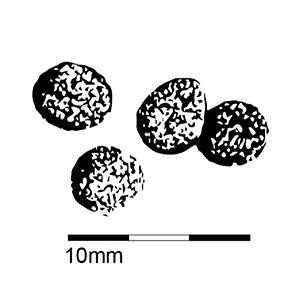Wallabies were first released near the Rotorua Lakes area in 1912 and have since become established and spread across 200,000 hectares. It is estimated that if no control work is undertaken, a third of the North Island could be impacted by the spread of wallabies within 50 years.
Where did wallabies in the North Island come from?
- They are Australian marsupials, formerly widespread in southern mainland Australia.
- Dama and parma wallabies (and brush tailed and swamp wallaby) were introduced to Kawau Island by Sir George Grey around 1870.
- In 1912, dama wallaby from Kawau Island were released near Lake Ōkāreka. Since that time, they have established over more than 200,000ha.
- Genetic studies on wallaby samples from the BOP and Waikato regions by Manaaki Whenua Landcare Research in 2023, have since confirmed that parma wallaby are also present in low numbers. They are thought to have been released in the 1990s.
Why wallabies are an issue
- Wallabies browse native seedlings and shrubs, preventing regeneration and altering the local abundance of palatable species in native scrub and forests. Their impacts on forests can destroy the habitats of native birds and lizards.
- Wallabies eat grass, targeting forest/pasture margins, and competing directly with livestock for pasture.
- Wallabies impact plantation forests by damaging pine and eucalypt seedlings.
- Wallabies are nocturnal and cautious, so they can be hard to find and control.
- Without our efforts to control them, wallabies could spread across one third of New Zealand over the next 50 years.
- If we don’t stop the spread of wallabies they could have significant impacts on lost farm production and ecosystem services.
Tipu Mātoro National Wallaby Eradication Programme
The Tipu Mātoro National Wallaby Eradication Programme began in July 2020.
It is a partnership of central and local government agencies, mana whenua, farmers, foresters, conservationists, researchers and communities, all working together to protect farms, forests and our whenua from wallabies.
Under the Tipu Mātoro banner Waikato Regional Council works with Bay of Plenty Regional Council, iwi, the Department of Conservation, Land Information NZ and Biosecurity New Zealand to control wallabies as part of the programme.
This work is focused on surveillance for and control of outlying breeding populations of wallabies in the greater Rotorua area, which includes part of the eastern Waikato region. In addition wallaby fences have been built at strategic locations to provide physical barriers to spread, and significant control is being undertaken in buffer areas, also aimed at reducing further wallaby spread.
All work strands of the programme contribute to the ultimate aim of progressively containing and eventually eradicating wallabies from the Bay of Plenty and Waikato.
Watch a video to learn more
Wallaby FAQs
Signs of wallabies

Indications of wallaby grazing or browsing are similar to that of other pests such as rabbits and possums.
However, their long, narrow hind feet and dragging tail can leave a characteristic track in areas of sand and soft soil.
Dama and parma wallaby tend to frequent favourite feeding areas. By doing this they create pad runs that are easily identifiable as narrow, well-formed tracks leading to pastureland or clearings in the bush.
Know your poo!
The most obvious sign of wallabies is their almost square and flattened faecal pellets. See the pictures below, in comparison to other droppings.
 Dama Wallaby droppings
Dama Wallaby droppings
 Possum droppings
Possum droppings
 Brown hare droppings
Brown hare droppings
More information
- If you see a wallaby, report it. You can use the Report Wallabies NZ form.
- For advice and additional information on wallabies, call our pest animal staff on freephone 0800 800 401.





